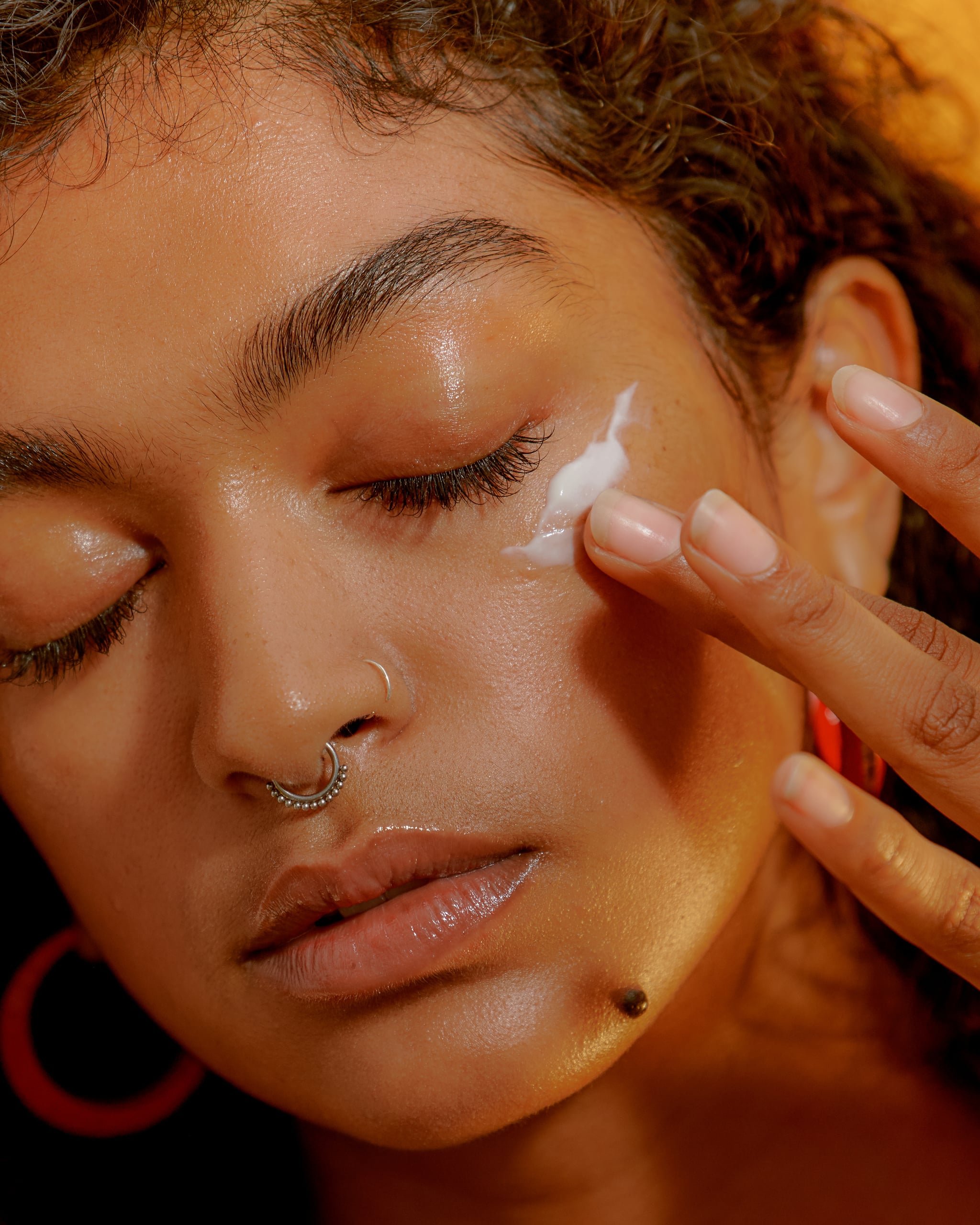In the ever-evolving world of skin-care ingredients, it can be hard to keep track of what you’re looking at on a label when you’ve got words like alpha hydroxy acid, niacinamide, benzoyl peroxide, and bakuchiol (or is it phyto-retinol?) jumping out at you. Still, even the most well-versed person in the space might not know about what experts are calling the next up-and-coming ingredient for treating hyperpigmentation: cysteamine.
“Cysteamine is an ingredient that has been shown to help with hyperpigmentation and can be a great option for someone looking for a nonhydroquinone option,” Marisa Garshick, MD, FAAD, board-certified dermatologist at MDCS Dermatology, tells POPSUGAR. “It can help to improve the appearance of sun spots, melasma, and postinflammatory hyperpigmentation.” (For the uninitiated, hydroquinone is an effective skin-lightening ingredient available by prescription but can potentially cause ochronosis — the permanent darkening of the skin — if used for long periods of time.)
As of right now, the ingredient is most commonly available in cream or lotion form by topical prescription known as Cyspera (formerly called Cysteamine Cream). “Other than [at a] dermatologist office, cysteamine is a raw material that is fairly new to the industry and is very niche,” Rachel Roff, aesthetician and founder of Urban Skin Rx, says. Still, some over-the-counter brands are starting to introduce lower doses of the ingredient into their products.
Here, we’re breaking down everything you need to know about cysteamine before incorporating it into your own skin-care routine, including what it is, how it works, and any potential risks.
What Is Cysteamine?
Cysteamine is a gentler alternative to hydroquinone with promising spot-lightening results, but you might be wondering: how does it work? “Cysteamine is an antioxidant naturally present in our bodies that delivers protection against environmental stressors,” Roff says. By blocking tyrosinase, the enzymes that contribute to the skin’s pigmentation process, “L-cysteamine is thought to work by inhibiting melanin synthesis to help reduce pigmentation,” Dr. Garshick adds.
Cysteamine Skin-Care Benefits
When applied topically, cysteamine cream can help fade existing spots and prevent future hyperpigmentation from forming. Studies have also shown, when used in 5 percent concentrations, it’s proven to be effective in treating epidermal melasma, a hyperpigmentation skin disorder. It can be applied to the face, neck, and chest area.
If you have tried other brightening ingredients like vitamin C, lactic acid, or kojic acid but haven’t seen results, this might be an option for you. “It is a good treatment for anyone dealing with hyperpigmentation or melasma who is unable to tolerate other active ingredients or hasn’t responded to other active ingredients,” Dr. Garshick says. “It is good for all skin tones and is safe for use in those with darker skin.”
Potential Risks of Cysteamine
While Roff says this ingredient is well tolerated by most skin types, you might want to avoid it if you have extremely sensitive skin. Plus, since it’s relatively newer to the market, there isn’t enough clinical research out there yet (at least in comparison to other, more established skin-care ingredients) to assess potential side effects.
With that in mind, “it should be avoided during pregnancy and breastfeeding since no studies have been performed,” Dr. Garshick says. “It may be associated with a temporary burning sensation, redness, or irritation.”
Another consideration to keep in mind is that, like some vitamin C serums or creams, the ingredient can carry a potentially unpleasant scent. “The smell is not great,” Roff says. “It’s a mix between sulfur and a perm. It goes away once rinsed off, but the smell can be off-putting, making it harder to get the average consumer to purchase.” To combat this, many manufactures have been introducing new technology into products to help minimize the scent.
Skin-Care Products With Cysteamine
The most potent option on the market is Cyspera, which was the first cysteamine cream introduced to the market and is available at a dermatologist’s office at a 5 percent concentration. If you go this route, Dr. Garshick recommends applying the formula and keeping it on the skin for 15 minutes, then rinsing off.
Still, “cysteamine is not considered an over-the-counter drug like sunscreen is; however, it is considered a ‘cosmetic’ product by the FDA,” Roff says. “This means it can be purchased online or in stores. There are just not that many brands in the industry that provide cysteamine lotions or creams at an affordable price.”
That’s why Roff created the Urban Skin Rx HyperCorrect Intense Fading Cream ($48), which also features supplementary ingredients like niacinamide and vitamin E to hydrate the skin. For a more targeted treatment, you can also try the Senté Cysteamine HSA Pigment & Tone Corrector ($149).
Source: Read Full Article



